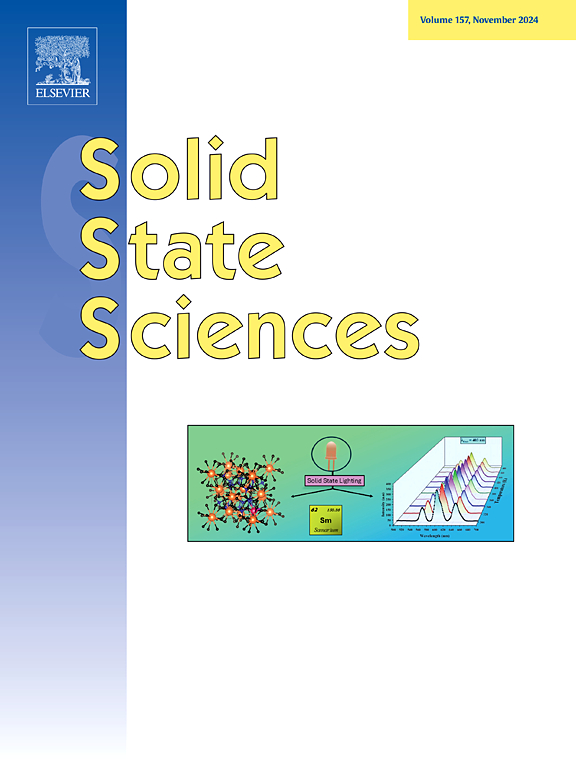Scintillation properties of Eu-doped Al2O3-SiO2 glasses prepared by melt-quenching method
IF 3.4
3区 化学
Q2 CHEMISTRY, INORGANIC & NUCLEAR
引用次数: 0
Abstract
In this study, we prepared the Eu-doped 10Al2O3-90SiO2 glasses with different Eu concentrations (0.1, 0.3, 1.0, and 3.0 %) and investigated the photoluminescence (PL) and scintillation properties. All samples showed the Eu2+ and Eu3+ luminescence peaks at around 450 and 600 nm, respectively. The quantum yield monitored Eu2+ luminescence decreased from 82.7 to 2.3 % with increasing Eu concentration. Scintillation peaks of Eu2+ and Eu3+ were observed at around 450 and 600 nm, the same as PL. We measured pulse height spectra to estimate light yields (LY). All samples indicated the full-energy absorption peaks, and especially the 0.3 % Eu-doped sample had the highest LY (1400 photons/5.5 MeV) among all samples. The energy resolution and α/γ ratio of the 0.3 % Eu-doped sample were 13 % and 0.3, respectively.

熔淬法制备掺铕Al2O3-SiO2玻璃的闪烁特性
在本研究中,我们制备了不同Eu浓度(0.1,0.3,1.0和3.0%)的掺Eu 10Al2O3-90SiO2玻璃,并研究了其光致发光(PL)和闪烁性能。所有样品的Eu2+和Eu3+发光峰分别位于450 nm和600 nm左右。监测的Eu2+发光量子产率随Eu浓度的增加从82.7%下降到2.3%。Eu2+和Eu3+的闪烁峰在450和600 nm左右,与PL相同。我们测量了脉冲高度光谱来估计光产率(LY)。所有样品均出现了全能吸收峰,其中以掺铕0.3%样品的LY最高(1400光子/5.5 MeV)。0.3%铕掺杂样品的能量分辨率和α/γ比分别为13%和0.3。
本文章由计算机程序翻译,如有差异,请以英文原文为准。
求助全文
约1分钟内获得全文
求助全文
来源期刊

Solid State Sciences
化学-无机化学与核化学
CiteScore
6.60
自引率
2.90%
发文量
214
审稿时长
27 days
期刊介绍:
Solid State Sciences is the journal for researchers from the broad solid state chemistry and physics community. It publishes key articles on all aspects of solid state synthesis, structure-property relationships, theory and functionalities, in relation with experiments.
Key topics for stand-alone papers and special issues:
-Novel ways of synthesis, inorganic functional materials, including porous and glassy materials, hybrid organic-inorganic compounds and nanomaterials
-Physical properties, emphasizing but not limited to the electrical, magnetical and optical features
-Materials related to information technology and energy and environmental sciences.
The journal publishes feature articles from experts in the field upon invitation.
Solid State Sciences - your gateway to energy-related materials.
 求助内容:
求助内容: 应助结果提醒方式:
应助结果提醒方式:


